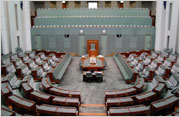Coalition needed to fight housing crisis

Coalition needed to fight housing crisis
The City of Sydney is urging all levels of government to work together in delivering a better range of housing choices in the inner city as a growing affordability crisis threatens Sydney’s economic and social sustainability.
In a new housing issues paper, the City calls on state and federal policymakers to bring together financiers, developers and community housing providers in a new national framework that offers key workers in Australia’s economic powerhouse a bigger mix of accommodation and tenures.
Studies show that the growing appeal of inner-Sydney real estate to high-income earners and domestic and foreign investors is pushing up property prices beyond the reach of many.
Essential workers, such as nurses, teachers, police officers, cleaners and bus drivers, are being forced out to outlying suburbs while many young adults struggle to realise their independence.
The problems posed if property price growth continues to outstrip pay increases have the potential to tarnish Sydney’s reputation as a global city and undermine its ability to attract talent from abroad.
“Sydney is in the grips of a housing affordability crisis and all levels of government need to work together on solutions,” Lord Mayor Clover Moore said.
“A diverse housing supply is fundamental to the cultural and social vitality, economic growth and liveability of Sydney.
“Close to a quarter of the NSW state economy and around seven per cent of national GDP are generated in the city, so governments at all levels cannot ignore the links between local, state and national economic productivity when it comes to the affordability of inner city housing.
“Together we need to look at new models of large-scale affordable rental housing that is delivered through partnerships among private developers, institutional investors, the not-for-profit sector and governments.
“Other global cities, such as New York and London, are tackling housing affordability through proactive policies and strategies backed by significant funding commitments.”
Today just over 750 dwellings in the City of Sydney are tenanted as affordable rentals, where residents pay no more than 30 per cent of their household salary. At less than one per cent of all homes, current affordable housing supply offers little support to the 50,000 key workers who keep the city ticking and make up 15 per cent of the workforce.
Thousands more affordable rental dwellings will be needed to meet the City’s 2030 goal of 7.5 per cent of overall housing supply.
Innovative ways to achieve this include shared equity schemes that have offered a leg-up to home ownership in other states and subsidies to community housing providers at urban renewal sites across the city.
Value-sharing models in which land rezoning sees governments and developers provide more community rental housing, and planning and tenancy reform to give renters more options and greater security, are highlighted in the issues paper.
A federal tax regime geared less to investors and more to institutional investment in community housing is also identified as part of the solution.
National policy coordination is needed to produce reforms and deliver substantial growth in the supply of affordable rental housing – not only in the city but right across Greater Sydney. This will spur a nation-wide community housing sector and encourage financial institutions to back partnerships between developers and community housing providers.
The City of Sydney promotes the supply of affordable housing through the tools and means at its disposal. City land has been sold at discounted prices and remediation costs for projects have been defrayed.
The affordable housing levies collected by the City from developers have delivered 550 affordable housing units in Ultimo-Pyrmont and Green Square, and 88 in North Eveleigh; more are on the way. The City also encourages supply through site-specific planning controls and agreements with private developers.
“We have invested in 224 affordable housing units in four separate sites and we are looking at all lands that may become surplus once projects, such as the Green Square East West Relief route in the south of the City, are finalised,” the Lord Mayor said.
“Combining current and proposed projects that support affordable housing, the City’s investment is nearly $20 million, but much more is needed.
“The state and federal governments have to put the policy pieces in place to increase supply as the shortfall becomes more critical.”
The City’s housing issues paper follows the recent Housing Diversity Summit at Town Hall House, which drew 140 experts from private, community and government sectors. Feedback from members of the public, who are invited to comment during the paper’s public exhibition from 4 May to 31 July, will also inform the City of Sydney’s housing policy.
For ore information visit City of Sydney








 Print
Print